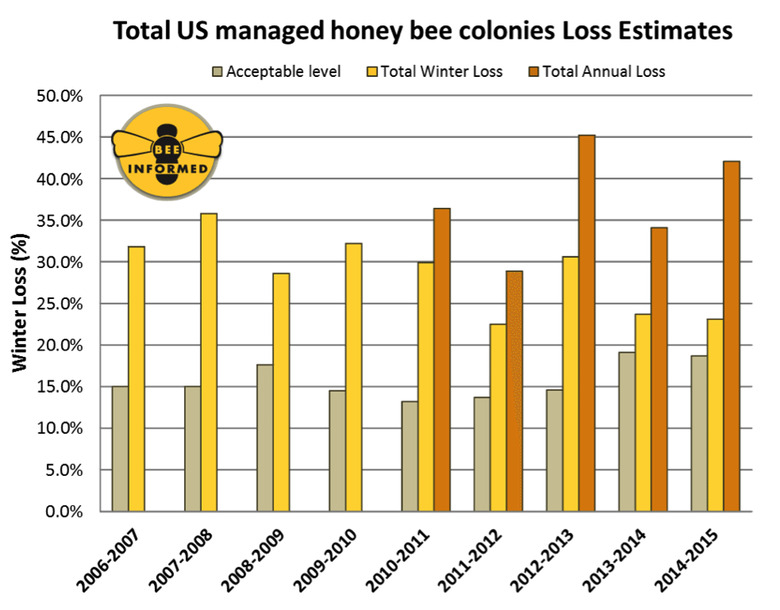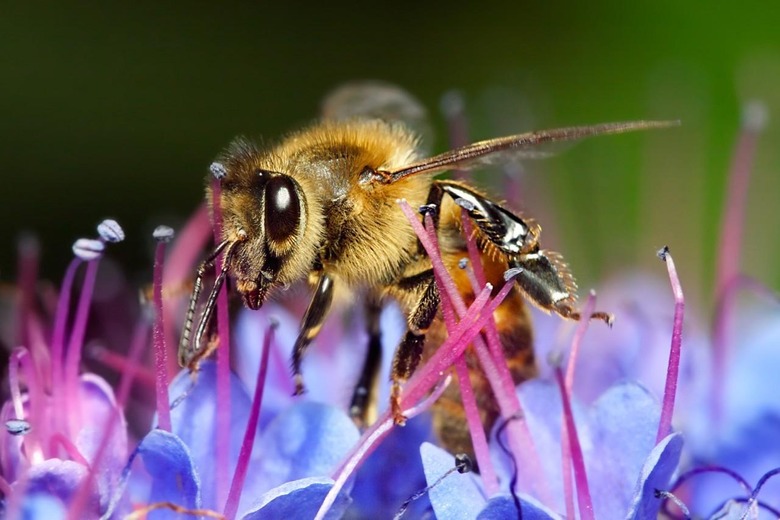Bee Aware: "Unheard Of" Honey Bee Death Rates In Action
For the first time ever, summer losses of Honey Bee populations in the United States have outweighed the winter. While the Winter Season loss of Honey Bee populations has done down compared to last year, annual losses are up, in the second-largest loss of population in five years and one of the biggest losses in recorded Bee Keeping history. Why does this matter to you? Because approximately 1 out of every 3 mouthfuls of food you digest benefits directly or indirectly from honey bee pollination.
What would we lose if honey bees keep dying?
Do you like almonds? This nut is completely dependent on honey bees to pollinate and survive. Do you like Cheeries? Same story. Below you'll find a list of crops that'd disappear without the aid of honey bees.
1. Apples
2. Blueberries
3. Blackberries
4. Raspberries
5. Oranges
6. Onions
7. Cucumbers
8. Avocados
9. Cherries
10. Almonds
11. Watermelon
12. Peaches
13. Cranberries
14. Grapefruit
15. Pumpkins
16. Cantaloupe
17. Pears
18. Plums
Note that while some of these foods could technically survive without the honey bee, the assistance of the bee is required to maintain crop production levels high enough for them to be a viable food source for humans on a large scale, and therefor profitable enough to be harvested by farmers.
How fast are honey bees dying?
According to the USDA, Honey Bee winter season losses between 2006-2011 averaged at about 33% every year. In the winter of 2011-2012, total losses (in the winter season, to be clear) dropped to 22%.

In 2012, losses jumped back up to over 30%, while in 2013 and 2014 winter losses fell below 25%.
Great, right?

Not so great.
Because while Winter losses of honey bee colony populations have fallen recently, annual losses (that's including losses all year long) have continued to rise. The winter of 2012-2013 and the winter of 2014-2015 were two of the largest annual losses in the history of honey beekeeping.
"We traditionally thought of winter losses as a more important indicator of health, because surviving the cold winter months is a crucial test for any bee colony," said Dennis vanEngelsdorp, Assistant Professor of Entomology at the University of Maryland and project director for the Bee Informed Partnership (via USDA).
"But we now know that summer loss rates are significant too. This is especially so for commercial beekeepers, who are now losing more colonies in the summertime compared to the winter."
"Years ago, this was unheard of."
According to the USDA, if winter losses continue at the 30+% rate we're seeing now – not even considering annual losses – honey bee pollination services will eventually become unviable to bee keepers.

While honey bees will still be around, they won't be helping humans the way they are now. Not at nearly as high an efficiency level, that is to say.
At over 40% of colonies dying over the course of just one year, we won't be long for honey bee collaboration on any kind of grand scale.
Bye bye honey bees.
It was nice knowing you, and dipping our carrots in your honey.
More information on honey bee loss can be found at BeeInformed.org
